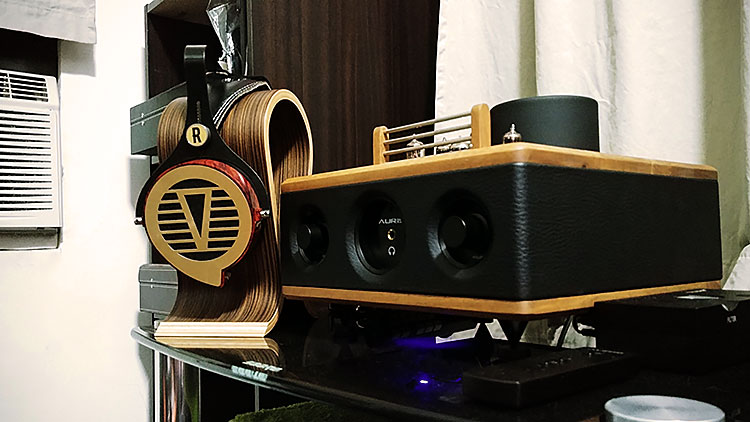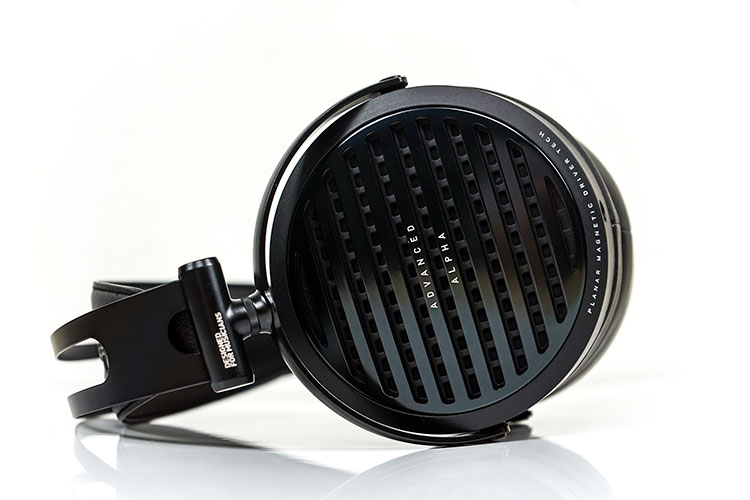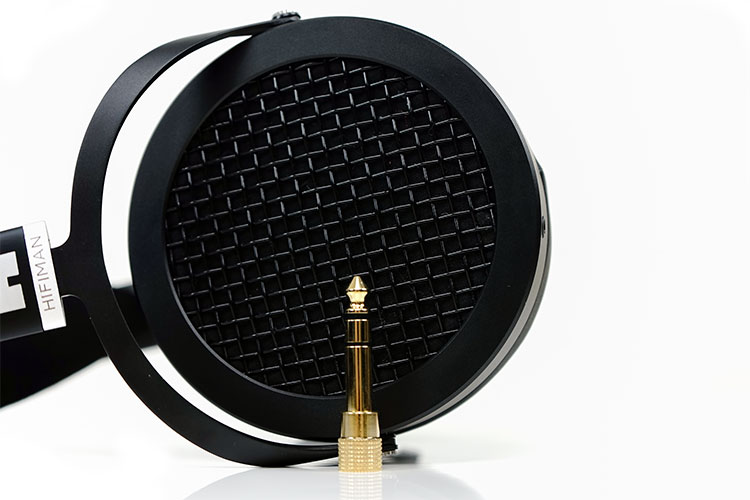Sound Impressions
Summary
It was most useful to have the dialog with Verum Audio before writing up our sound impressions because the insight into how he referenced the tuning and the target market he is aiming for is quite revealing.
“Audeze-ish”
In summary, he is mentioned going for something “Audeze-ish” but with some important “tweaks” in the overall presentation. The natural presumption here is an LCD-2 Classic or the older LCD-2 Pre-Fazor edition presentation given the data supplied and the comparative work on both the Verum 1’s frequency response and the LCD-2C.
If you have not heard the LCD-2 Classic or Pre-Fazor then, in short, this is a muscular sound with some excellent low-end reach and a lower mid-range presence offset by a darker upper mids performance. There is a lower treble boost also but not huge amounts of upper treble extension.
Indeed, the response curve of the Verum 1 follows a very similar and very linear and solid bass response as you would find on the LCD-2 from 30Hz right up to 1k. Beyond that is where Roman spoke about “tweaking” the Audeze sound a little.
Tweaks
How so? Well, you do get less of a 700Hz-1k lower midrange peak on the Verum 1 so the instrumental body is a little more neutral sounding. It is not totally flat, just not as pushed forward as the LCD-2.
Both will have a similar 1-2k drop but where the LCD-2 continues to dip until right up to 5k (read less air), the Verum 1 stays further forward and plateaus up to around 5k. That’s great news for higher-pitched vocal lovers and those who want to hear a little more percussion presence than what the older LCD-2 tended to deliver.
The Verum 1 also has a short drop from 5-7k in the lower treble whereas the LCD-2 has quite the reverse with it spiking a little more at 5-8k compared to the Verum 1 which peaks more at 8-10k.
Overall, people might find the upper mids and lower treble of the Verum 1 to be just a bit livelier sounding. The greater upper treble emphasis will add just a touch more odd-harmonic infusion to higher pitched instrumental timbre making it the brighter sounding of the two presentations.
It is important to note when we say the brighter of the two that this is compared to the older LCD-2 models before Fazor. Overall, the Verum 1 is not an “inherently” bright-sounding headphone. In fact, compared to the likes of the Advanced Alpha and Sundara I would still describe it as relatively dark sounding.
Staging
The Verum 1 staging delivers something more than a mosh-pit experience size. There is a degree of openness that I quite like about it. However, I would place the Verum 1 staging potential on a mid-size concert stage level rather than the vast arena-like qualities of the Susvara or the HD800.
The LCD-2 pre-Fazor edition has never been known to have a stellar top-end extension so don’t expect the Verum 1 to be super airy either. That being said it does extend a little better than the LCD-2 Pre-Fazor and does not roll off quite as much or as quickly as the Audeze beyond 7k.
The key characteristics of the Verum 1 staging are excellent depth and good clarity right down to 30Hz as well as the forward vocal and upper-mid percussion presence. Imaging is just okay though and not something lighting quick or super precise.
The Verum 1 is more adept at macro-dynamics than micro-detail and will not be able to project a level of complexity as good as the newer LCD-2 Fazor editions.
Bass
This is not an ‘in-your-face bass presentation’. However, it is very pure, very solid, and extends all the way down to 20-30Hz without any significant drop-off. Roman has resisted the temptation to fatten up the mid-bass or elevate the lower-mids significantly for “cheap thrills” and warmth without power.
The Verum 1 low-end sounds all the more ‘dynamic’ and balanced sounding because of that.
It does have a significant impact on the general perception of depth in the staging presentation. Despite the forward upper mids performance pulling vocals further forward the solidity of the bass response never gets lost.
I heard more than once the mention of a ‘speaker-like’ feel to the Verum 1’s bass performance. Roman has gone as far as to mention that the particular set-up on our sample is going to mimic that vibe from a quality bookshelf speaker low-end, and it is not that far off, to be honest.
That is a bass curve typical of a very well-tuned planar headphone and you will find dozens of references to other headphones that convey the same presentation and almost all of them are discussed in a very positive light. I do keep having to remind myself we are talking about a headphone that is selling for $300.
Mids
I love the instrumental timbre on the Verum 1. This is my kind of tone and a tone I really enjoy pairing with hoary old rock numbers. Now the Verum 1 lower-mids are not quite as warmed up or as boosted as the LCD-2. They lack that 500Hz to 800Hz boost that gives the lower mids of the LCD-2 that huge presence and at times welcome levels of body.
However, the Verum 1 is not that far behind, and generally speaking the bass to mids transition is almost more coherent sounding. Overall, I find the instrumental positioning on the lower mids to be a touch more neutral with a hint less warmth but still retaining an excellent level of PRaT and power from that solid bass response.
Vocals
Vocals are clear sounding and with a slight bias to males over higher pitched or generally female vocals though not by much. As mentioned, that for me is a key differentiator of Verum 1.
Yes, like the LCD-2 there is a necessary dip from 1-2k but it does not continue that dip into the upper mids and lower treble and stays relatively balanced, almost plateau-like in its response.
Upper Mids Presence
Percussion presence and bite are more noticeable in the Verum 1 presentation, at least compared to the LCD-2 Pre-for or Classic. It will come across as the slightly livelier and brighter of the two but not an out-and-out bright-sounding response. To be honest, you can push it a little too hard on brighter-sounding sources/amps.
Just a little something to be aware of as it is not too apparent on softer tube amps such as the Auris HA-2SE.
One thing to note is that I do not find the upper-mids to be anywhere near as boosted as the Advanced Alpha. The Verum 1 tuning is more nuanced and darker sounding than the Alpha. It is also a bit smoother sounding.
If you do find any hardness in the timbre in the upper mids it is more likely to be pulling an odd-harmonic infusion from the elevated upper treble and then sounding slightly boosted from 2-4k compared to the more subdued LCD-2.
Treble
The treble on the Verum is also a touch different from the LCD-2. Again, another tweak. Having said all that both headphones do a dip at 4-5k but the Verum 1 resists pushing out too hard from 6-8k and does not create an aggressive treble peak at that all-too-sensitive 7k marker.
Instead, the Verum 1 pulls a bit more from a greater 8-1ok emphasis and in the process adds some additional air and sparkle.
It also creates a little more odd-harmonic emphasis on upper mids percussion timbre so cymbal splashes are cleaner and harder sounding than the LCD-2 performance. Nothing splashy but fairly lively and marginally less body.
Synergy
Efficiency
The Verum 1 is rated at just 10Ω and 96dB. This is fairly efficient for a double-sided magnet planar design. Verum Audio has mentioned more than a few times that they believe you will get a decent sound out of weak sources using the Verum 1 and yes, they did include smartphones in that statement.
Smartphones
Plugged into a humble LG G6 you actually get a pretty decent performance from the Verum 1 without having to push it right to the max (well, about 5-10 steps below maximum volume but still pretty impressive).
Of course, it can scale with better sources and amps, most well-designed planar headphones can and in my opinion should. However, save for an expected level of compression or lack of dynamic range and a lack of solidity on the absolute low end you get a very good teaser of the Verum 1’s potential.
Portable Amping
A couple of affordable sweet spots for portability with the Verum 1 are the FiiO Q5 and iFi’s xDSD, two portable and very popular wireless DAC/Amps. Both have decent power and enough to easily get to satisfyingly loud levels without even having to switch up to high gain (Q5 AM3a amp card).
The xDSD’s 3D+ delivered a slightly more holographic staging experience on the Verum 1 over the Q5 though I did prefer the power of the Q5 bass boost. The xDSD also sounds a little cleaner and more neutral sounding using BT with the Verum 1 compared to the warmer-sounding Q5 BT experience (both aptX).
Scaling
Having said all that I have to chuckle a little because I tend to find a darn good desktop amp where I can hear the Verum 1 play out to its maximum potential. The gap between portable sources and desktop amps is not as big as the less efficient planars like the AEON Flow or the Hifiman Sundara but it is a superior setup nevertheless.
Degree Of Transparency
It is also where I fast came to the conclusion that the timbre or tuning bias of the Verum 1 has a relatively good level of transparency. Certain amps and DACs will flavor the sound of the Verum 1 in a nuanced manner so its presentation is not fixed in stone.
Desktop Pairings
For example, I was not a huge fan of a drier brighter presentation or one with a super clean DAC behind it. A system chain of the NuPrime CDP-9 and the Violectric V281 left me cold when paired with the Verum 1.
The low-end was snappy and impactful but it didn’t have the same level of texture and smoothness as alternative setups. Also, it sounded a little too clean and bright sounding in the upper middle and treble.
Two superior high-end desktop performers were the Auris HA-2SE tube amp and the flawless Xi Audio Formula S solid-state flagship. The Formula S/Verum 1 was smoother, sweeter and more refined than the Violectric/CDP-09 pairing.
The Auris HA-2SE was not quite as gutsy or dynamic sounding but it has a richer midrange that suits the Verum 1’s vocal performance. It also has a bit more body to the treble performance. Overall, I ended up using the Auris HA-2SE paired with a Chord Qutest for the majority of my listening with the Verum 1.
Select Comparisons
Advanced Alpha
$499
Low-End
The Verum 1’s low-end sounds are the more linear and speaker-like of the two. The Alpha’s low-end is a little more elevated and more forward sounding, perhaps the more aggressive of the two and with a touch more impact. It also has a bit more mid-bass warmth.
Mids
The big difference is once you hit the mids. The Alpha has a much more pronounced 2-3k bump in the upper mids as well as a brighter and more energetic lower treble signature. Vocals on the Alpha are right there in front and center, as are percussion attacks.
Generally, any instrumental timbre on the Alpha with an odd harmonic order that stretches from 2-3k up to around 7k is going to sound a bit harder and brighter than the Verum 1 if not offset with a seriously sweet-sounding amp or source.
If you have genres of music or specific tracks with a lot of energy, percussion attacks, or synth rolls then they will dominate the presentation on the Alpha.
With the Verum 1, the mids are much more coherent sounding, less pushed, and less in your face. Yes, the 2-4k range is more forward sounding than an LCD-2 but nowhere near as exaggerated as the Alpha.
As a result, percussion is still lively but it does not dominate the presentation and generally will sound the darker of the two.
Treble
Much of that pleasing tone is how both are tuned for treble. The Alpha stays busy and elevated, especially in the 7-8k marker. The Verum 1 pulls back a little around the same marker. It is not dipped, more plateaued so it does have some presence but it is not as bright or brash sounding as the Alpha can be.
Preferences
I would grab the Alpha if you want something a bit more in your face and possibly the more intimate sounding of the two planars. It’s slightly punchier and more colored sounding low-end will better suit modern pop and rock.
The cleaner sounding and more forward vocal sound might also be better suited to acoustical or acapella work. Just watch for tracks with a ton of synth and higher-pitched percussion attacks as they can dominate and get fatiguing.
The more open sound and pleasing timbre of the Verum 1 will make it the better all-rounder and the better balanced of the two for a wider range of genres. Certainly, the more forgiving of the two overall.
Hifiman Sundara
$499
Low End
Much like the Alpha and the Verum 1, the Sundara follows a very linear and well-behaved low-end and continues right up to around 1k.
If anything, the Sundara is the most linear of the 3 planar units from 100Hz to 1k and I suspect it tails off just marginally earlier than the Verum 1 at around 30Hz but not by much. Otherwise a very similar solid sounding bass responses and a coherent transition into the lower mids.
Mids
Here again, is where things start to differ in their presentations. The Verum 1 has a small ridge and climbs to 1k, not as steep as the LCD-2C but higher than the Sundara which remains almost flat to 1k.
As such the Sundara sounds a little cooler in its instrumental timbre and vocals sit just marginally further back though not by much. The Verum 1 vocals for me sound a little further forward and the instrumental timbre is a little warmer and fuller sounding.
Both have that characteristic dip and rise from 1-3k, however, the Sundara is a little more pronounced in its rise from 3-5k. Not as extreme as the Alpha but nevertheless a bit more presence in its upper mids and lower treble performance over the Verum 1.
Treble
The Verum 1 is lively enough but it dips at 4-6k whereas the Sundara is almost the exact opposite and only dips briefly at 6-7k. You will get a lot more lower-treble presence with the Sundara and as such will sound perceptibly the brighter and more forward-sounding of the two.
This is especially so for percussion timbre and instruments that draw their upper harmonic order from the lower treble range of the Sundara. That can be a pro and con depending on your preference. Guitar fretwork and solo rifts will sound more precise, quicker sounding to a degree, and more dramatic on the Sundara.
The Verum 1 will deliver a slightly smoother more organic sound with more body but could also sound a touch slower and offer less perceptible micro-detail. You may also find some vocal pitching to have a slightly harder edge on the Sundara compared to the Verum 1’s slightly softer-sounding harmonic balance.
Both have good upper treble energy, air, and sparkle. I have to say the treble tonality of the Sundara is just a bit more detailed and solid-sounding over the Verum 1. It is perhaps the calling card of the Sundara in some ways and their best mid-fi treble tuning to date.
Preferences
I am taking the Sundara where I want a little more detail and additional clarity. Tracks with plenty of complex guitar shredding, speed metal, and possibly some acoustical work. I would pick the Verum 1 if I want a bit more body and a slightly smoother even harmonic sound to my instrumental timbre and vocals.
Our Verdict
The Verum 1 is a bit of a steal at $300, heck even $349 is a great price for a well-balanced-sounding planar headphone.
Fans of the Audeze’s house sound will want to hear this. It is solid sounding, smoother than the Advanced Alpha, has more body than the Hifiman Sundara, and is slightly brighter than the LCD-2C.
Yes, it is a little lacking in micro-detail, not quite as involving, and more speaker-like in its presentation but at this price point it honestly still punches way above its fiscal pain point.
I look forward to seeing how the build and design evolve over the course of the campaign and beyond. The one I have here is what you would call “an engineering sample” so there are some refinements on the way such as the rubber dampeners, matte-black gimbals/headband as well as the stock cable which we do not have here.
I think a lot of the big boys are going to sit up and take notice of the Verum 1. It was not so long ago that a certain Dan Clark made his name with DIY Fostex drivers and look where he is now. Verum Audio is in a good place right now to dream of a similar path.
Verum 1 Technical Specifications
- Weight: 530 grams (450g in series)
- Sensitivity: 96 db
- Resistance: 12Ω (2Ω on the cable)
- Double-sided magnetic system
- Cable 3m – OFC Mogami cable + Amphenol connectors
- 82 mm membrane made from 8 um mylar film






